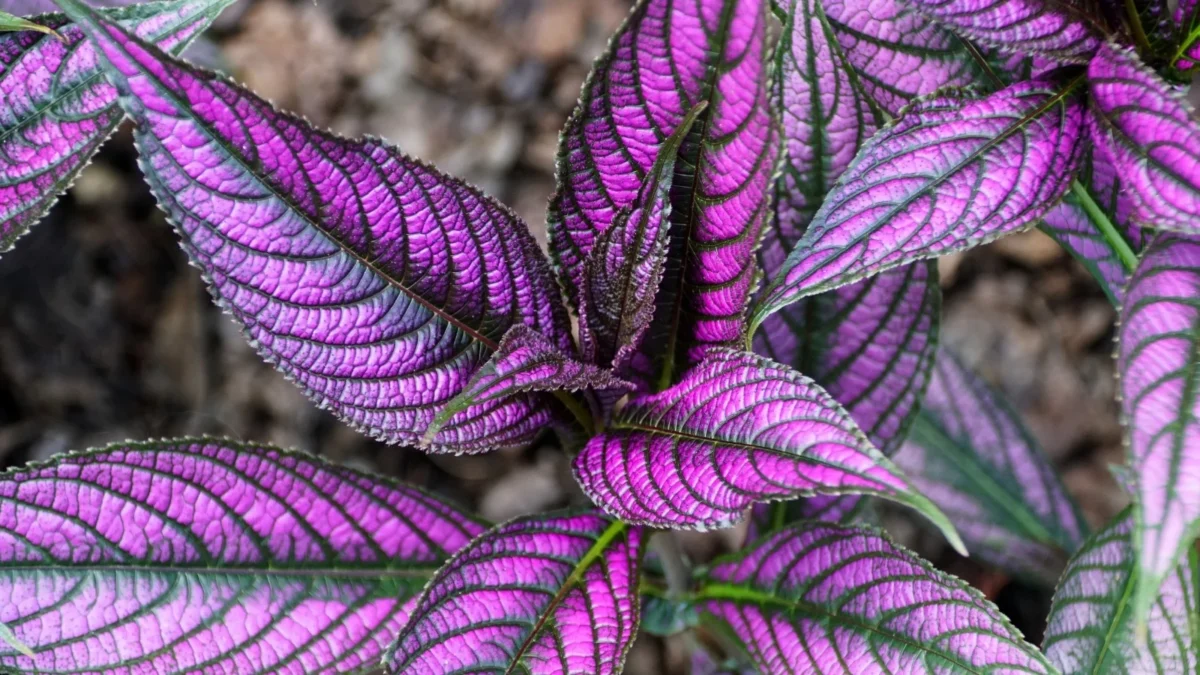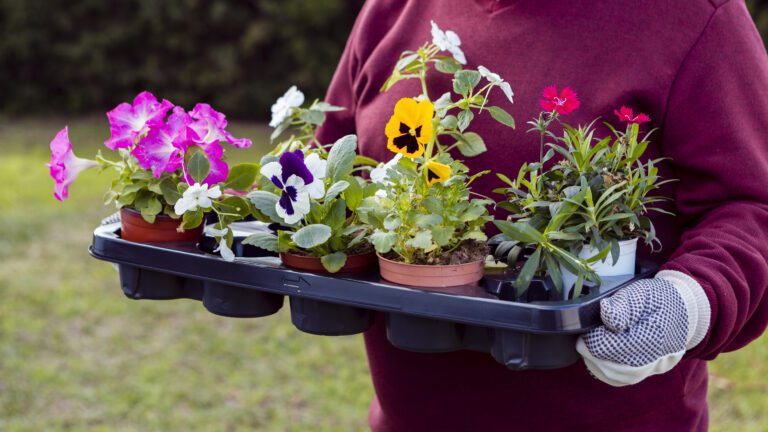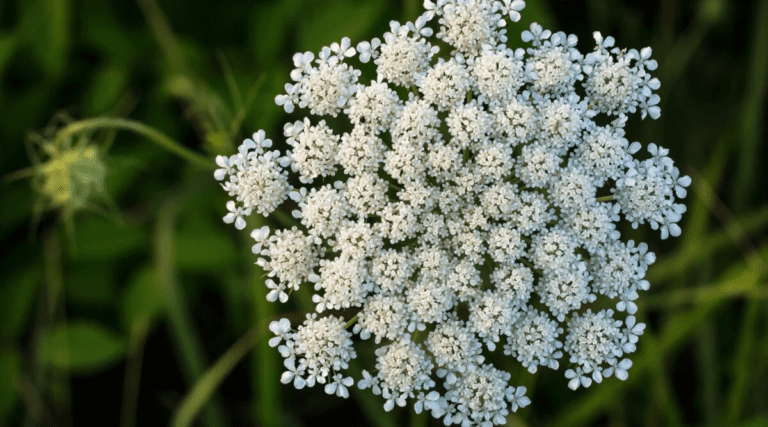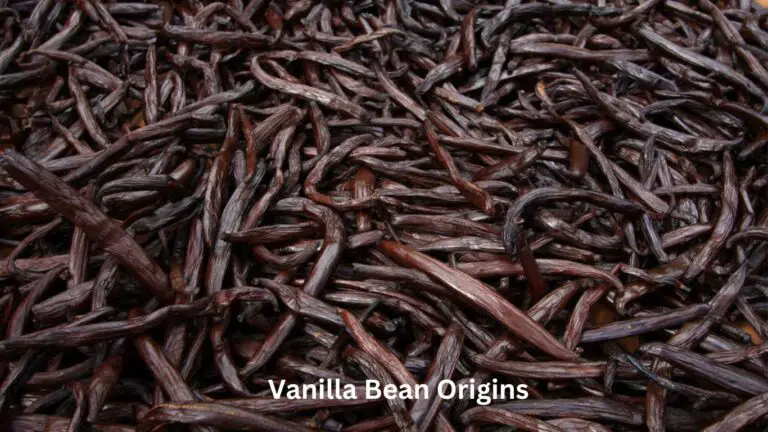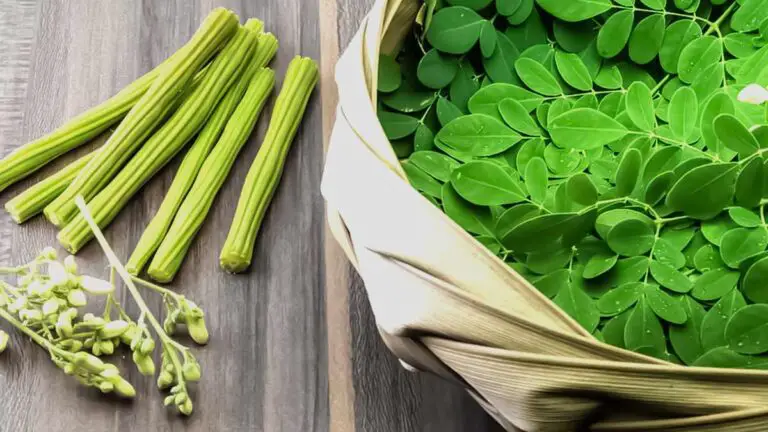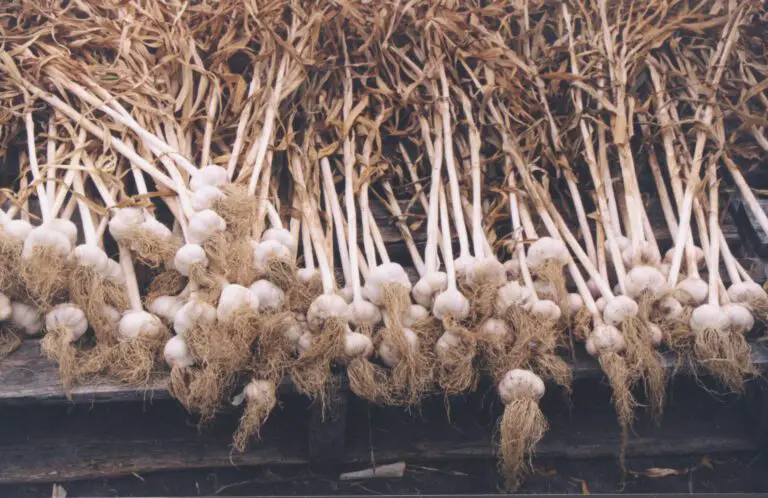Persian Shield Plant: Vibrant Foliage Care
Characteristics of the Persian Shield plant
The Persian Shield plant, scientifically known as Strobilanthes dyerianus, is a stunning foliage plant prized for its vibrant purple and silver leaves. This tropical plant can grow up to 3 feet tall and 3 feet wide, making it a striking addition to any indoor or outdoor garden. The leaves of the Persian Shield plant are ovate in shape, with a metallic finish that catches the light beautifully, adding a touch of elegance to its surroundings. Additionally, the plant produces small, tubular, violet flowers that can attract pollinators like bees and butterflies.
One of the key characteristics of the Persian Shield plant is its ability to thrive in warm and humid conditions. Originating from Myanmar (Burma), this plant is well-suited to tropical climates, preferring temperatures between 60-80°F (15-27°C). It is essential to protect the Persian Shield plant from cold drafts and temperatures below 50°F (10°C), as it can be sensitive to colder weather. Proper care and attention to its growing environment will ensure that this striking plant continues to flourish and display its stunning foliage for all to admire.
Ideal growing conditions for Persian Shield plant
To ensure the Persian Shield plant thrives, it is essential to provide the ideal growing conditions. This vibrant plant flourishes best in warm, humid environments with temperatures ranging between 65-75°F (18-24°C). Consistent moisture levels are crucial, so ensure the plant is not placed in areas with high drafts or direct heat sources that can dry out the soil rapidly. Additionally, maintaining a relative humidity of around 50-80% will help promote healthy growth and lush foliage.
When it comes to lighting, the Persian Shield plant favors bright, indirect light. A location where it receives filtered sunlight or partial shade throughout the day is optimal. Direct sunlight exposure should be avoided as it can scorch the delicate leaves. Providing the plant with adequate lighting will not only enhance its striking coloration but also support its overall well-being.
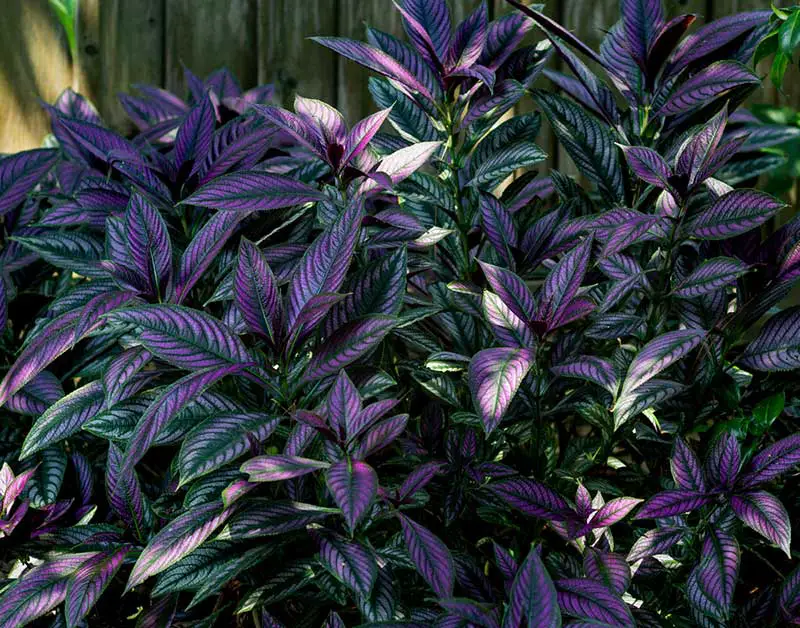
Watering requirements for Persian Shield plant
The Persian Shield plant requires consistent moisture to thrive. It is crucial to keep the soil evenly moist but not waterlogged. Overwatering can lead to root rot, while underwatering can cause the plant to wilt and decline. To determine when to water, check the top inch of the soil – if it feels dry to the touch, it’s time to water.
In the growing season, typically spring and summer, you may need to water your Persian Shield plant more frequently due to increased evaporation and growth. During the dormant period in fall and winter, reduce watering frequency but still ensure the soil does not completely dry out. Adjusting your watering schedule based on the season and the plant’s growth cycle will help maintain optimal moisture levels for your Persian Shield plant.
Light requirements for Persian Shield plant
The Persian Shield plant thrives in bright, indirect light conditions. It is essential to place your plant in a location where it can receive ample amounts of sunlight without being directly exposed. Ideally, a spot near a window with filtered sunlight or under grow lights for about 6-8 hours a day will promote optimal growth and vibrant foliage.
Insufficient light can lead to leggy growth and a loss of the plant’s striking colors. On the other hand, too much direct sun can cause the leaves to burn and damage the plant. Finding the right balance of light exposure is crucial for the Persian Shield plant to flourish and display its beautiful purple and green leaves to their full potential.
Soil requirements for Persian Shield plant
When it comes to the soil requirements for Persian Shield plants, it is essential to provide them with a well-draining and nutrient-rich medium. These plants thrive in a soil mix that is slightly acidic to neutral, with a pH level ranging from 5.5 to 7.0. A good quality potting mix formulated for tropical plants or a mixture of peat moss, perlite, and compost can be ideal for Persian Shield plants.
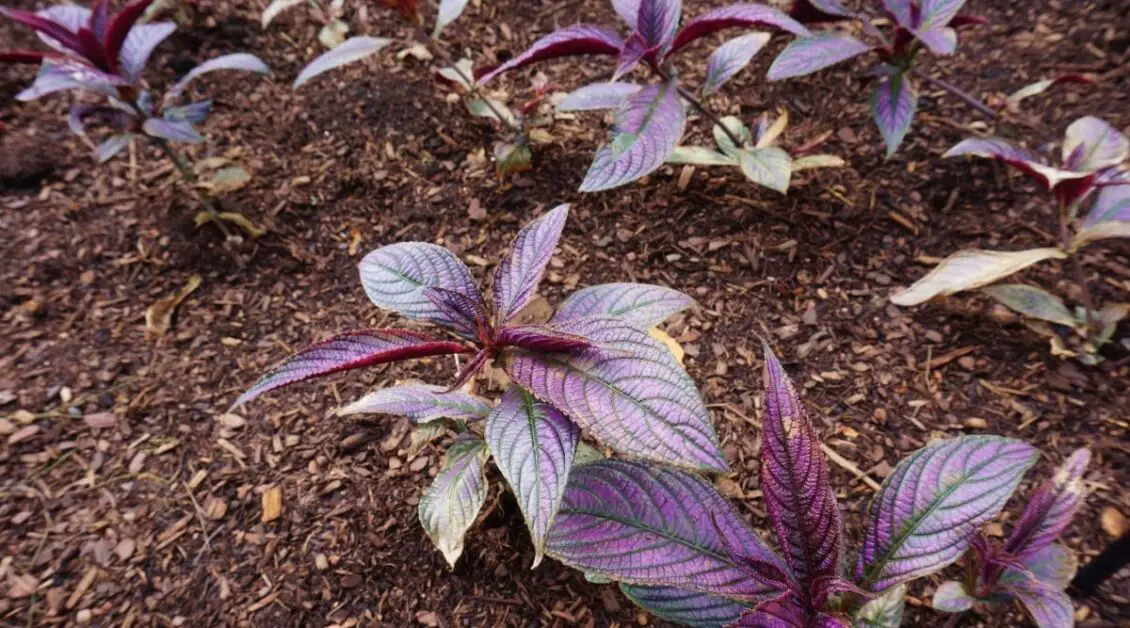
Additionally, ensuring good aeration in the soil is crucial for the roots of Persian Shield plants. Adding perlite or coarse sand to the soil mix can help improve drainage and prevent the soil from becoming compacted. This will allow the roots to breathe and absorb nutrients more effectively, promoting healthy growth and vibrant foliage in your Persian Shield plant.
Fertilizing tips for Persian Shield plant
Fertilizing is a crucial aspect of caring for Persian Shield plants to ensure they maintain their vibrant foliage. It is recommended to fertilize your Persian Shield plant once a month during the growing season, which typically spans from spring to early fall. Choose a balanced, water-soluble fertilizer with a diluted concentration to avoid overfeeding, as excessive nutrients can harm the plant. Additionally, opt for a fertilizer that is higher in phosphorus to promote healthy root development and overall growth of the plant.
When fertilizing your Persian Shield plant, it is best to apply the fertilizer to damp soil to prevent potential root burn. Avoid fertilizing a dry plant, as this could shock the roots and hinder the absorption of essential nutrients. Remember to always follow the manufacturer’s instructions on the fertilizer packaging regarding application and dosage to prevent any potential damage to your plant. Proper fertilization will help your Persian Shield plant thrive and display its stunning foliage to its fullest potential.
Pruning techniques for Persian Shield plant
To maintain the health and appearance of your Persian Shield plant, regular pruning is essential. Pruning helps encourage new growth, improves air circulation within the plant, and prevents overcrowding of leaves. When pruning your Persian Shield, it is important to focus on removing dead or damaged leaves, as well as any branches that appear overgrown or leggy. This will promote a more compact and bushy growth habit, enhancing the overall aesthetic of the plant.
Additionally, pruning can also be used to shape your Persian Shield plant and control its size. By strategically trimming back certain branches or stems, you can guide the plant’s growth and create a more symmetrical and visually appealing appearance. Remember to use sharp, clean pruning shears to make precise cuts, and always ensure that you are trimming at a 45-degree angle to promote proper healing and growth. Regularly inspecting your plant for any pruning needs will help keep it looking its best throughout the year.
Propagation methods for Persian Shield plant
Propagation of the Persian Shield plant can be easily achieved through stem cuttings. To propagate this stunning plant, select a healthy stem that is around 4-6 inches long and contains several sets of leaves. Using a sharp, clean pair of scissors or pruning shears, carefully cut the stem just below a leaf node. Remove the lower set of leaves to expose a node, which is where the roots will form.
Once you have prepared the cutting, place it in a container filled with a well-draining potting mix, ensuring that the node is buried beneath the soil surface. Keep the soil consistently moist and provide indirect light to encourage root development. After a few weeks, roots should begin to grow, indicating successful propagation. It is recommended to keep the new plant in a warm, humid environment to support its growth during this delicate stage.
Common pests and diseases affecting Persian Shield plant
One of the common pests that can affect the Persian Shield plant is the whitefly. These tiny insects feed on the plant’s sap, causing yellowing leaves and stunted growth. To control whiteflies, you can use insecticidal soap or neem oil, which are effective and safer options for managing these pests on your Persian Shield.
Another potential issue that Persian Shield plants may face is powdery mildew. This fungal disease appears as a powdery white substance on the leaves, leading to wilting and eventual leaf drop. To prevent powdery mildew, ensure good air circulation around the plant and avoid overhead watering. Fungicidal sprays containing sulfur or potassium bicarbonate can also help combat powdery mildew on your Persian Shield plant.
The chart below showss the pests and diseases of persian shield plants and the solutins:
| Pest/Disease | Solution |
|---|---|
| Aphids | Spray affected areas with a strong jet of water to dislodge aphids. Use insecticidal soap or neem oil for persistent infestations. Introduce natural predators like ladybugs. |
| Whiteflies | Hang yellow sticky traps near the plant to monitor and capture adult whiteflies. Apply insecticidal soap, neem oil, or horticultural oil to control nymphs and adults. Increase airflow to deter whiteflies. |
| Mealybugs | Dab mealybugs with a cotton swab dipped in rubbing alcohol. Use insecticidal soap or neem oil for severe infestations. Prune heavily infested areas. |
| Scale Insects | Remove scales manually with a soft brush or cotton swab dipped in rubbing alcohol. Apply insecticidal soap or horticultural oil for persistent infestations. |
| Powdery Mildew | Improve air circulation around the plant. Remove affected leaves and dispose of them. Apply fungicidal sprays containing potassium bicarbonate or sulfur. |
| Leaf Spot | Trim affected leaves and dispose of them. Avoid overhead watering and water at the base of the plant. Apply fungicides containing copper or sulfur if necessary. |
| Bacterial Leaf Blight | Remove affected leaves promptly. Improve air circulation and avoid overhead watering. Apply copper-based fungicides or bactericides. |
| Fusarium Wilt | Remove and discard infected plants to prevent spread. Avoid overwatering and ensure good soil drainage. Rotate plantings to prevent reoccurrence. |
Tips for maintaining vibrant foliage on Persian Shield plant
To maintain vibrant foliage on your Persian Shield plant, it is crucial to provide the plant with adequate lighting. These plants thrive in bright, indirect sunlight, so placing them near a window that receives filtered light can help ensure their leaves retain their stunning purple coloration. Insufficient light can cause the foliage to fade, so be mindful of the plant’s positioning in your home.
In addition to proper lighting, maintaining the humidity levels around the Persian Shield plant is essential for vibrant foliage. These plants prefer a humid environment, so misting the leaves regularly or placing a small humidifier nearby can help keep the foliage lush and colorful. Avoid placing the plant near drafts or vents, as dry air can lead to dull, lackluster leaves.
How to repot Persian Shield plant
When it comes time to repot your Persian Shield plant, it is important to choose a container that is slightly larger than the current pot. This will give the plant enough room to grow without being overwhelmed by too much space. Select a well-draining potting mix that is rich in organic matter to provide the plant with the nutrients it needs to thrive.
Carefully remove the plant from its current pot by gently loosening the roots and teasing them apart if they are tightly packed. Place the Persian Shield plant in the center of the new pot and fill in the gaps with fresh potting mix, ensuring that the plant is at the same level as it was in the old pot. Water the plant thoroughly after repotting to help it adjust to its new environment.
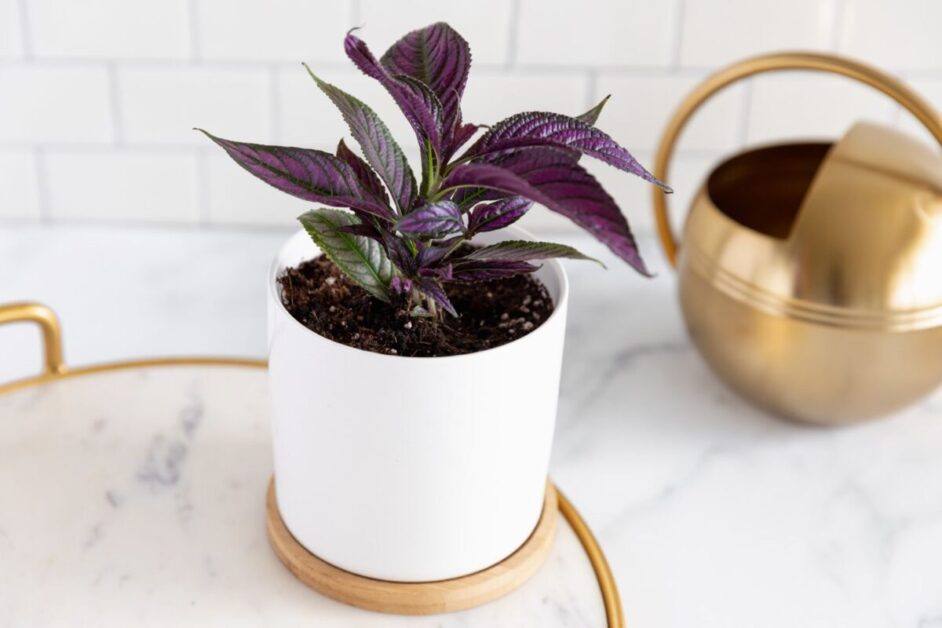
Seasonal care guide for Persian Shield plant
As spring approaches, it is essential to prepare your Persian Shield plant for the upcoming growing season. Increased daylight hours and warmer temperatures mean that your plant will be entering a period of active growth. During this time, ensure your Persian Shield receives adequate sunlight, as it thrives in bright, indirect light conditions. However, be cautious of direct sunlight, as it can scorch the delicate foliage of the plant.
In the summer months, be mindful of the heat stress that can affect your Persian Shield plant. Consider moving it to a slightly shadier spot to prevent leaf burn and maintain the plant’s vibrant colors. Adequate watering is crucial during this time, as the plant may require more frequent watering due to the increased evaporation rate. Monitor the soil moisture levels regularly to prevent overwatering or underwatering, both of which can be detrimental to the health of your Persian Shield.
Creative ways to display Persian Shield plant in your home
The Persian Shield plant, with its striking purple and silver foliage, can be a beautiful addition to any room in your home. One creative way to display this unique plant is by placing it in a hanging basket near a sunny window. This allows the vibrant colors of the leaves to catch the light and create a stunning visual display. Alternatively, you can group several Persian Shield plants together on a plant stand or shelf to create a lush and tropical feel in your living space.
Another creative idea for showcasing the Persian Shield plant is to incorporate it into a terrarium or glass cloche. The plant’s colorful foliage will pop against the clear glass, adding a touch of elegance and sophistication to your interior decor. Additionally, mixing the Persian Shield with other plants of varying heights and textures can create a visually interesting and dynamic arrangement that will be sure to impress guests and elevate the ambiance of your home.
Benefits of having a Persian Shield plant
Having a Persian Shield plant in your indoor or outdoor garden brings a touch of exotic beauty and vibrant colors that can liven up any space. The striking purple and green foliage of the Persian Shield plant adds a pop of color and texture, creating a visually appealing focal point in your home or garden. Its unique appearance can complement a variety of decor styles, from modern and minimalist to bohemian and eclectic.
Aside from its aesthetic appeal, the Persian Shield plant offers additional benefits to your living environment. As a natural air purifier, this plant helps to improve indoor air quality by removing harmful pollutants and toxins. Its lush foliage also helps to increase humidity levels, which can be beneficial for respiratory health and overall well-being. In addition, caring for a Persian Shield plant can provide a sense of relaxation and fulfillment, making it a rewarding addition to any plant collection.
There are lots of benefits of persian shield plants and some of them are shown below in the table:
| Benefit | Description |
|---|---|
| Ornamental Beauty | Persian Shield plants feature striking foliage with iridescent purple, pink, and green hues, adding vibrant color and visual interest to indoor or outdoor spaces. |
| Air Purification | Like many houseplants, Persian Shield plants help improve indoor air quality by absorbing pollutants such as formaldehyde, benzene, and xylene from the air. |
| Stress Reduction | Caring for and nurturing plants like the Persian Shield can have therapeutic effects, reducing stress, anxiety, and promoting overall well-being. |
| Indoor Decor Enhancement | The lush foliage and colorful leaves of the Persian Shield make it an attractive addition to indoor decor, adding a touch of nature and vitality to any room. |
| Low Maintenance | Persian Shield plants are relatively low maintenance and easy to care for, requiring moderate watering, indirect sunlight, and occasional fertilization. |
| Humidity Regulation | Placing Persian Shield plants indoors can help regulate humidity levels, creating a more comfortable and healthier environment, especially in dry climates. |
| Natural Privacy Screen | When grown outdoors, Persian Shield plants can be used as a natural privacy screen or hedge, providing both visual and acoustic privacy in gardens or landscapes. |
| Wildlife Habitat | Persian Shield plants attract pollinators such as bees and butterflies, contributing to biodiversity and supporting local ecosystems. |
| Feng Shui Enhancement | In Feng Shui, plants like the Persian Shield are believed to promote positive energy flow, harmony, and prosperity when placed in certain areas of the home or garden. |
| Edible and Medicinal Uses | In some cultures, Persian Shield leaves are used for culinary purposes or in traditional medicine for their potential health benefits, although consumption should be approached with caution. |
Conclusion: Enjoying the beauty of your thriving Persian Shield plant
When your Persian Shield plant is thriving, its vibrant foliage can truly elevate the visual appeal of any space in your home. The iridescent purple leaves with green veins create a striking contrast that captures the eye and adds a touch of exotic elegance to your indoor garden. The lush and dense growth of this plant not only brings beauty but also a sense of tranquility and vitality to your surroundings.
As you admire the beauty of your flourishing Persian Shield plant, take a moment to appreciate the care and attention that goes into nurturing it. By providing the ideal growing conditions, proper watering and lighting, suitable soil, and occasional pruning, you have helped your plant thrive and showcase its full potential. Maintaining the health and vibrancy of your Persian Shield plant is not just about aesthetics; it’s a rewarding experience that connects you with nature and enhances the ambiance of your living space.
Watch this video to learn more about persian shield plants.
Can Persian Shield plants be grown outdoors?
Yes, Persian Shield plants can be grown outdoors in warm, humid climates with filtered sunlight.
How often should I fertilize my Persian Shield plant?
Fertilize your Persian Shield plant every 2-4 weeks during the growing season with a balanced houseplant fertilizer.
Are Persian Shield plants toxic to pets?
Yes, Persian Shield plants are toxic to pets if ingested, so it’s important to keep them out of reach of any curious animals.
Can I propagate my Persian Shield plant in water?
Yes, you can propagate Persian Shield plants in water by placing cuttings in a glass of water until roots develop, then transferring them to soil.
Should I mist my Persian Shield plant?
Misting your Persian Shield plant regularly can help increase humidity levels, which is beneficial for its overall health and growth.

